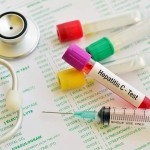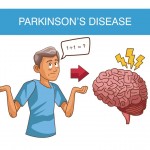Thalassaemia
It is a forms of inherited autosomal recessive blood disorder that originated in the Mediterranean region. In thalassemia, the disease is caused by the weakening and destruction of red blood cells. Hemoglobin is the protein in red blood cells that carries oxygen. People in thalassemia make less hemoglobin and fewer circulating red blood cells than normal, which results in mild or severe anemia. Thalassemia will present as microcytic anemia which may be differentiated from iron deficiency anemia.
Types of Thalassaemia:
Alpha Thalassaemia The alpha chain is produced by four genes, two on each chromosome 16, and the severity of the condition depends on how many of those genes have been mutated.
Beta Thalassaemia Beta thalassaemia can range from moderate to severe. The most severe form of the condition is known as beta thalassaemia major (BTM). People with BTM will require blood transfusions for the rest of their life.
Symptoms
Symptoms of thalassaemia are the same as anemia which include:
Growth delay and poor feeding
Fatigue
Weakness
Shortness of breath
A yellow discoloration of the skin (jaundice)
Causes
Both α and β thalassemias are often inherited in an autosomal recessive fashion, although this is not always the case. For the autosomal recessive forms of the disease, both parents must be carriers in order for a child to be affected. If both parents carry a hemoglobinopathy trait, there is a 25% risk with each pregnancy for an affected child. Genetic counseling and genetic testing is recommended for families that carry a thalassemia trait.
Diagnosis
A physical exam may reveal a swollen (enlarged) spleen. Thalassaemia can be diagnosed using a blood test. A blood sample will be taken and sent to a laboratory for examination.
Red blood cells will appear small and abnormally shaped when looked at under a microscope.
A complete blood count (CBC) reveals anemia.
A test called haemoglobin electrophoresis shows the presence of an abnormal form of haemoglobin.
Antenatal screening: The purpose of antenatal screening (screening that is carried out during pregnancy) is to check for inherited disorders such as sickle cell anemia and to provide parents with information they need to make informed decisions.
Treatments
Treatment for thalassaemia major is a lifelong process which requires different specialists to manage the complications of the condition.
Blood transfusions: The main treatment for thalassaemia involves regular blood transfusions to provide haemoglobin that the body needs. A bone marrow transplant may help to treat the disease in some patients, especially children.
Complications
Some common complications of thalassemia are:
Enlarged spleen (hypersplenism)
One of the functions of the spleen (an organ found behind the stomach) is to recycle red blood cells. In people with BTM, the blood cells are often abnormal in shape, so the spleen has problems recycling them. The result is that an increasing amount of blood stays in the spleen, making it grow larger.
This lead to overactive spleen, when it starts to destroy healthy blood cells received during blood transfusions, making treatment for thalassemia difficult. In these circumstances, the only treatment is to remove the spleen using a procedure known as a splenectomy.
Hormone complications
One of the glands that regulate the hormone system (the pituitary gland) is very sensitive to the effects of iron. It can, therefore, become damaged in some people with BTM, even if they stick to their chelation therapy.
Damage to the pituitary gland can result in a number of hormonal conditions, including delayed puberty and restricted growth. Hormone replacement therapy may be needed to correct these conditions.
References:
WHO
CDC
US National Library of Science








